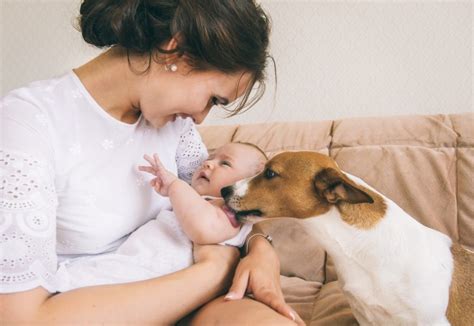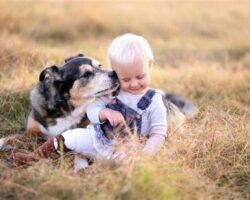Understanding your dog’s behavior
Understanding your dog’s behavior is crucial in building a strong and harmonious relationship with your furry friend. Dogs have their own unique ways of communicating and expressing themselves, and it’s important for us as pet owners to decipher their signals and understand their needs and emotions. By gaining a deeper insight into your dog’s behavior, you can not only address any issues or concerns but also enhance the overall well-being of your beloved pet.
Dogs utilize a wide range of body language and vocalizations to convey their feelings. It’s essential to pay attention to their cues, such as tail wagging, raised hackles, or relaxed body posture, as these can provide valuable information about their current state of mind. Additionally, understanding the different types of barks and vocalizations can help you determine whether your dog is anxious, excited, or in distress.
Furthermore, it’s important to recognize that dog behavior can be influenced by various factors, including breed, upbringing, past experiences, and even their health. By familiarizing yourself with your dog’s breed characteristics, you can gain insights into their inherent traits and adapt your training and interaction accordingly. Additionally, providing a safe and stimulating environment, regular exercise, and a balanced diet can contribute to your dog’s overall well-being and positively impact their behavior.
In summary, understanding your dog’s behavior is an ongoing process that requires observation, patience, and empathy. By paying attention to their body language, vocalizations, and unique traits, you can develop a deeper understanding of their needs and emotions. This knowledge will enable you to provide the necessary support, address any behavioral issues, and ultimately foster a strong and positive bond with your furry companion.
Preparing your dog for the arrival
Preparing your dog for the arrival of a new family member or a new pet is an important step in ensuring a smooth transition and a positive experience for everyone involved. Dogs are sensitive creatures that thrive on routine and familiarity, so it is essential to take their needs into consideration when introducing a major change into their lives.
The first step in preparing your dog for the arrival of a new family member or pet is to create a safe and comfortable space for them. This can be done by setting up a designated area in your home where your dog can retreat to when they need some alone time. This space should be equipped with their bed, toys, and water bowl, and should be separate from the areas where the new addition will spend most of their time.
Another important aspect of preparing your dog for the arrival is gradually introducing them to the new smells, sounds, and sights associated with the new family member or pet. This can be done by bringing in items that have the scent of the new addition, such as blankets or clothing, and allowing your dog to investigate and become familiar with them. Additionally, playing recordings of baby noises or pet sounds can help your dog become accustomed to the new sounds they will encounter.
- Ensure your dog is up to date on vaccinations and parasite prevention before the arrival.
- Introduce your dog to the new family member or pet gradually and under supervised conditions.
- Teach your dog appropriate behavior and reinforce positive habits through training and rewards.
Gradual exposure and desensitization are key components in preparing your dog for the arrival. This involves gradually increasing the level of exposure your dog has to the new family member or pet, starting with brief and supervised interactions and gradually increasing the duration and frequency. It is important to monitor your dog’s behavior during these interactions and provide them with plenty of positive reinforcement and rewards for appropriate behavior.
Monitoring and fostering a safe environment is crucial during the transition period. It is important to provide a secure and comfortable space for your dog to retreat to if they feel overwhelmed or anxious. Additionally, ensuring that your dog has access to plenty of exercise and mental stimulation can help alleviate stress and promote a positive mindset as they adjust to the arrival of the new family member or pet.
| Key Points | |
|---|---|
| Create a safe and comfortable space for your dog | Setting up a designated area with familiar items can provide a sense of security for your dog. |
| Gradually introduce your dog to new smells, sounds, and sights | Allow your dog to become familiar with the new addition by gradually introducing them to their scent and associated sounds. |
| Use gradual exposure and desensitization techniques | Gradually increase your dog’s exposure to the new family member or pet, starting with brief and supervised interactions. |
| Monitor your dog’s behavior and provide positive reinforcement | Observe your dog’s behavior during interactions and reinforce positive behavior with rewards and praise. |
| Create a safe and stimulating environment | Provide your dog with access to plenty of exercise and mental stimulation to alleviate stress and promote a positive mindset. |
Creating a positive association
A positive association is a powerful tool when it comes to shaping your dog’s behavior. By creating positive experiences for your dog, you can help them develop a favorable attitude towards certain situations, objects, or people. This is particularly useful in addressing fear or anxiety-related issues that your dog may have. In this blog post, we will explore the importance of creating a positive association and provide some tips on how to do it effectively.
One of the key aspects of creating a positive association is to identify what triggers your dog’s negative reaction. It could be anything from thunderstorms or fireworks to meeting new people or visiting the veterinarian. Once you have identified the triggers, you can start the process of counterconditioning, which involves pairing the trigger with something your dog loves or enjoys.
For example, if your dog is afraid of thunderstorms, you can start by playing calming music or providing them with a treat during a storm. By consistently associating positive experiences with the trigger, you can gradually change your dog’s emotional response from fear to relaxation or even excitement. Remember to always start with a low-intensity version of the trigger and gradually increase the intensity as your dog becomes more comfortable.
List of tips for creating a positive association:
- Identify triggers: Pay close attention to your dog’s behavior and body language to identify what triggers their anxiety or fear.
- Choose appropriate rewards: Select treats or rewards that your dog finds highly motivating and enjoyable.
- Start with low-intensity triggers: Begin the counterconditioning process with triggers that your dog can tolerate relatively easily.
- Consistency is key: Be consistent in associating positive experiences with the trigger to reinforce the desired response.
- Gradually increase intensity: As your dog becomes more comfortable, gradually expose them to higher-intensity versions of the trigger.
| Trigger | Positive Association |
|---|---|
| Visiting the vet | Offering treats and praise during and after the visit |
| Meeting new people | Introducing new people gradually and providing rewards for calm behavior |
| Thunderstorms | Playing calming music and offering treats during a storm |
Creating a positive association takes time and patience, but the results can be truly transformative. Remember to always consider your dog’s individual needs and limitations as you work towards building a positive and trusting relationship with them. With consistent effort and positive reinforcement, you can help your dog overcome their fears and anxieties, leading to a happier and more confident canine companion.
Supervised introductions and interactions
Supervised introductions and interactions are crucial when bringing a new dog into your household or introducing your dog to other pets or people. These supervised interactions allow you to safely observe and control the initial meetings between dogs, ensuring a positive and successful introduction. By being present and actively involved in the process, you can help facilitate a calm and comfortable environment for both dogs, mitigating any potential conflicts or misunderstandings.
During supervised introductions, it is important to keep the dogs on leashes or in separate rooms initially to avoid any direct physical contact. This allows them to become familiar with each other’s scent and presence without any potential threat or territorial behavior. By keeping them separate but in close proximity, they can observe each other’s behavior and body language from a safe distance.
Once the dogs show signs of calmness and curiosity towards each other, you can gradually introduce them while still maintaining control. This can be done by allowing them to sniff each other through a baby gate or by using leash-walking techniques where the dogs walk side by side with a safe distance between them. It is essential to closely monitor their body language during these interactions, looking for any signs of fear, aggression, or discomfort.
An important aspect of supervised introductions and interactions is positive reinforcement. It is crucial to reward your dog for displaying appropriate behavior and maintaining calmness during the process. By using treats, praise, and affection, you can reinforce positive associations and encourage your dog to continue exhibiting good manners in the presence of the new dog or other individuals.
- Supervise the first interactions closely to ensure safety and prevent any aggressive behavior.
- Use leashes or baby gates to maintain control and introduce the dogs gradually.
- Observe and monitor their body language for signs of fear, aggression, or discomfort.
- Reward your dog for appropriate behavior and display of calmness during the introductions.
| Benefits of Supervised Introductions and Interactions | Considerations during the Process |
|---|---|
| – Allows you to observe and control the initial meetings | – Ensure a safe and comfortable environment for both dogs |
| – Minimizes the risk of aggression or conflict | – Pay attention to body language and emotional cues |
| – Helps establish positive associations | – Be patient and take it slow |
Supervised introductions and interactions lay the foundation for a harmonious relationship between dogs. By taking the time to properly introduce and supervise their initial interactions, you can prevent any negative experiences or conflicts from arising. Remember to always prioritize safety, be attentive to their body language, and reward positive behavior. With patience and guidance, your dog will have the opportunity to develop positive social skills and build strong bonds with their new companions.
Teaching your dog appropriate behavior
Teaching your dog appropriate behavior is an essential part of responsible pet ownership. Dogs, like humans, need to learn what is expected of them in order to live harmoniously with their families and in society. Teaching appropriate behavior involves setting clear boundaries, providing consistent training, and reinforcing positive behaviors.
One effective way to teach your dog appropriate behavior is through positive reinforcement. This involves rewarding your dog for displaying desired behaviors. For example, if you want your dog to sit before being fed, you can give them a treat when they do so. By consistently rewarding the behavior you want, your dog will begin to associate that behavior with a positive outcome and will be more likely to repeat it.
Listed below are some key tips for teaching your dog appropriate behavior:
- Be consistent: Dogs thrive on routine and consistency. Make sure to set clear rules and expectations, and follow them consistently. This will help your dog understand what is expected of them.
- Use positive reinforcement: Reward your dog with treats, praise, or affection when they display appropriate behaviors. This will encourage them to repeat those behaviors in the future.
- Redirect unwanted behaviors: Instead of punishing your dog for unwanted behaviors, try redirecting their attention to a more appropriate behavior. For example, if your dog is jumping on guests, ask them to sit and reward them for doing so.
Another important aspect of teaching your dog appropriate behavior is to provide them with plenty of mental and physical stimulation. Dogs have a natural need to explore, play, and learn. By providing them with opportunities to engage in these activities, you can help prevent boredom and undesirable behaviors.
| Activities to provide mental stimulation: | Activities to provide physical stimulation: |
|---|---|
| Interactive puzzle toys | Daily walks or jogs |
| Training sessions | Playing fetch |
| Scent games | Swimming |
| Hide and seek | Agility or obedience classes |
Remember, teaching your dog appropriate behavior is a lifelong process. It requires patience, consistency, and ongoing training. By investing time and effort into teaching your dog, you can ensure they become well-adjusted, obedient, and happy members of your family.
Gradual exposure and desensitization
Gradual exposure and desensitization are two important techniques that can be used to help dogs overcome their fears and anxieties. Dogs, like humans, can develop phobias and fears of specific objects, situations, or stimuli. These fears can manifest in various ways, such as excessive barking, trembling, or even aggression. It is crucial for dog owners to understand the concept of gradual exposure and desensitization in order to effectively address these issues and help their furry friends live a happier and more relaxed life.
Gradual exposure involves slowly introducing the feared or anxiety-inducing stimulus to the dog in a controlled and manageable way. For example, if a dog is afraid of loud noises, the owner can start by playing a recording of the noise at a very low volume. Over time, the volume can be gradually increased as the dog becomes more comfortable and less reactive to the sound. The key is to make sure the dog feels safe and secure during the exposure process, and to always provide positive reinforcement and rewards for calm and relaxed behavior.
Desensitization is closely related to gradual exposure and involves reducing the sensitivity or reactivity that the dog has towards the feared stimulus. This technique aims to change the dog’s emotional response from fear or anxiety to a more neutral or positive one. Desensitization can be achieved by exposing the dog to the stimulus at a level that does not trigger a strong negative reaction and gradually increasing the intensity or proximity over time. The goal is to help the dog build confidence and learn to associate the once-fearful trigger with positive experiences.
- Start with low-intensity exposure and gradually increase the difficulty
- Use positive reinforcement techniques to reward calm behavior
- Take breaks and give the dog time to relax and process the exposure
- Seek professional help if necessary, especially for severe fears or phobias
| Benefits of Gradual Exposure and Desensitization |
|---|
| Helps dogs overcome fears and anxieties |
| Improves the dog’s overall well-being and quality of life |
| Allows the dog to participate in various activities without distress |
| Strengthens the bond between the dog and the owner |
Monitoring and fostering a safe environment
A safe environment is essential for the well-being and happiness of our furry friends. As pet owners, it is our responsibility to ensure that our dogs are protected from potential dangers and harmful situations. Monitoring and fostering a safe environment should be at the top of our priority list when it comes to caring for our dogs.
One way to create a safe environment for our dogs is by being aware of potential hazards in our surroundings. This includes identifying toxic plants, securing harmful chemicals and medications, and ensuring that our dogs cannot access electrical cords or small objects that they may swallow. By regularly inspecting our homes and yards, we can proactively prevent accidents and keep our dogs safe.
Another important aspect of monitoring and fostering a safe environment is supervision. Dogs, especially puppies and young dogs, are naturally curious and may get themselves into trouble if left unsupervised. By keeping an eye on our dogs at all times, we can quickly intervene if they engage in inappropriate behavior or if any potential dangers arise. Supervision also allows us to prevent and address any signs of aggression or stress in our dogs during interactions with other animals or people.
Creating a safe environment for our dogs also involves providing them with a comfortable and secure space of their own. This can be a designated area in our home or a crate that serves as their safe haven. By having a personal space where they can retreat to whenever they feel overwhelmed or anxious, we can help reduce their stress levels and improve their overall well-being.
In summary, monitoring and fostering a safe environment for our dogs is crucial for their health and happiness. By being aware of potential hazards, supervising our dogs, and providing them with a secure space of their own, we can ensure that they stay safe and thrive in their surroundings. Remember, a safe environment is the foundation for a happy and healthy dog!
- Be aware of potential hazards in your home and yard.
- Supervise your dog to prevent accidents and address any inappropriate behavior.
- Provide your dog with a comfortable and secure space of their own.
| Benefits of a safe environment for dogs | Tips for monitoring and fostering a safe environment |
|---|---|
| – Prevention of accidents and injuries | – Regularly inspect your home and yard for potential hazards |
| – Reduction of stress and anxiety | – Always supervise your dog, especially during interactions with other animals or people |
| – Promotion of overall well-being | – Provide your dog with a comfortable and secure space of their own |
Frequently Asked Questions
Q: Why is it important to understand your dog’s behavior?
A: Understanding your dog’s behavior helps you develop a stronger bond with your pet and can also prevent or address any behavioral issues that may arise.
Q: How can I prepare my dog for the arrival of a new family member or pet?
A: To prepare your dog for the arrival of a new family member or pet, gradually introduce them to the scent and presence of the newcomer, provide positive reinforcement, and ensure they have a safe and comfortable space.
Q: How can I create a positive association for my dog?
A: You can create a positive association for your dog by using treats, rewards, and praise during training sessions, and by exposing them to positive experiences in various environments.
Q: How should I handle supervised introductions and interactions between my dog and other animals or people?
A: It is important to supervise introductions and interactions between your dog and others to ensure everyone’s safety. Use leashes, observe body language, and intervene if necessary. Gradually increase exposure and monitor their behavior.
Q: How can I teach my dog appropriate behavior?
A: Teaching your dog appropriate behavior involves consistent training, positive reinforcement, and setting clear boundaries. Use rewards, be patient, and seek professional help if needed.
Q: How does gradual exposure and desensitization help with my dog’s behavior?
A: Gradual exposure and desensitization to certain triggers or environments can help reduce your dog’s fear or anxiety. By exposing them in controlled increments and rewarding positive behavior, they can learn to overcome their fears.
Q: How can I monitor and foster a safe environment for my dog?
A: To ensure a safe environment for your dog, eliminate potential hazards, provide enough exercise and mental stimulation, and establish routines. Regular assessment and supervision are key in promoting their well-being.





